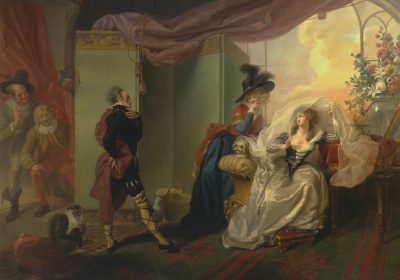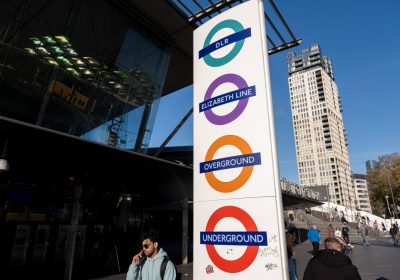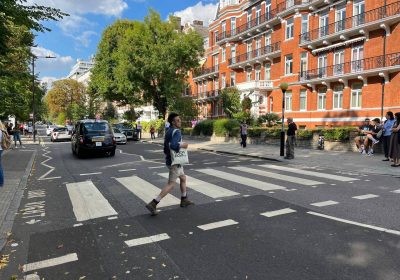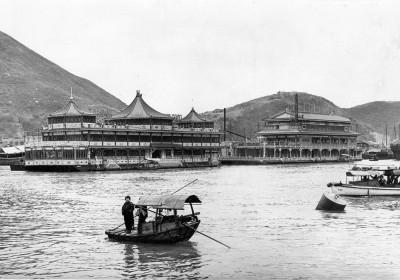
On 15 June, I published the first part of my series of articles on the musical qualities of the London tube lines. In a nutshell, the Jubilee Line is a cacophonous monster, the Central Line is nothing short of a depressing nightmare, while the Piccadilly Line has attained the very attributes of a bemusing jester. This week, I will turn my attention to three other lines and liken each of them to a piece of classical music that shares their acoustic characteristics.
Circle Line
As its name suggests, the Circle Line operates in a spiral-shaped loop. According to its timetable, Circle Line services operate in regular ten-minute intervals. This, for me, is a classic example of false advertising. For one reason or another, Circle Line trains are particularly prone to delays and would often stop for ages either at the platforms or in the tunnels. Signal failures, points failures, emergency repair works are some of the most common culprits. Dogs, mattresses and rubbish being on the tracks have also, on occasion, stopped trains from operating. Circle Line drivers are rather exasperated whenever they have to make an announcement to the passengers explaining why the service is stopped and delayed time and time again.
I try to avoid taking the Circle Line, and if I must make a journey on it, I would happily get off at a couple of stations before my intended destination. On the one hand, this is due to the frequent delays being excruciatingly annoying. On the other, many stations are so close to each other that I might as well walk the distance. Indeed, it is only a stone throw’s away from Paddington to Edgware Road, from Farringdon to Barbican, from Moorgate to Liverpool Street, and from Mansion House to Cannon Street, just to name a few examples.
As such, the Circle Line is best represented by Camille Saint-Saëns’ The Elephant or Tortoises from his lighthearted suite The Carnival of the Animals. Both movements are heavy, clumsy and laborious. Moreover, they contain a certain hypnotic quality to them, which perfectly matches my desire to drift off whenever I am travelling on the Circle Line. Interestingly, Saint-Saëns actually banned this piece from being performed in public during his lifetime. The Frenchman took himself extremely seriously and feared that this jovial work would damage his reputation as a ‘serious’ composer!
- Tortoises from The Carnival of the Animals.
Waterloo and City Line
A couple of months ago, some of my American friends visited me in London and I took them around the British capital sightseeing. They had a great time travelling on the tube network and found the shape of our underground trains particularly interesting. We spoke on Skype a few days ago and I asked them if they remembered seeing a ‘Waterloo and City Line’ on our tube map. They all shook their head and said they could not recall anything about it. To be fair, why would they?
After all, the Waterloo and City Line is not tailored for tourists. It is the shortest line on the London tube network, with only two stations and takes just four minutes for an end-to-end journey. The people travelling on this rather special line are mostly businessmen, in particular bankers, who have to go to work in the capital’s financial district and do not have a second to waste. They commute from southwest London, Berkshire, Surrey or Hampshire to Waterloo Station, where they could board the Waterloo and City Line to take them across the Thames and directly to Bank, a station which is located in the heart of the City of London and right next to the Bank of England.
The mood on the Waterloo and City Line is often tense and stressful, with hardly any conversations between passengers, who are always deep in thought among themselves, pondering about the financial and fiscal decisions that they have to make later that day. The agitation and uneasiness of this line are best reflected by the second movement of Shostakovich’s Tenth Symphony , a four-minute work that is characterised by its breathlessness and gravity. While there are disagreements in the literature as to whether Shostakovich was actually portraying Stalin’s brutal regime with this movement, the oppressive and overbearing nature of the work has never been questioned.
- Gianandrea Noseda conducting the London Symphony Orchestra in the second movement of Shostakovich’s Tenth Symphony.
Victoria Line
My office in London is situated in Westminster and, a week ago, I had to attend a university alumni event in King’s Cross. The easiest way to travel between these two stations is to take the Victoria Line, a deep tube line with an automatic train operation system that can transport Londoners at lightning speed. Upon arriving at the event, my friends pointed at me and laughed, with one asking if I had just come from a swim in the North Sea. I smiled, acknowledging their good-natured humour and simply said, ‘Nah, that’s just what the Victoria Line does to you!’
For the readers who are confused, what I meant is that I was absolutely drenched. My forehead was dripping with sweat, my face was all red and my shirt looked as though it had just come out of the washing machine. I was by no means in a rush but spending 15 minutes on the Victoria Line was probably enough to turn any snowman into a burning flame. I have never understood why the Victoria Line’s trains and platforms are like an oven. Indeed, a colleague of mine even suggested that spending considerable time on the Victoria Line in the winter could be a solution to the cost of living crisis, as this helps keep you warm and could also reduce your heating bill. Furthermore, it is rather interesting that the Victoria Line’s tunnels and platforms are often filled with light smoke, as if something has overheated. This might have something to do with the fact that the Victoria Line is the only multi-station tube line that runs completely underground, which prevents fresh air from reaching its operating system.
The tropical and sweaty characteristics of the Victoria Line are reminiscent of Vivaldi’s Summer from The Four Seasons. In this concerto, the Italian composer tried to use his music to accompany a sonnet that includes the words ‘the heat of the burning summer sun’, ‘fierce storm’ and ‘thunder and lightning’. By simply listening to this three-movement work, perspiration has already appeared all over my body. My advice would be: Don’t listen to this piece of music if you ever find yourself on the Victoria Line. Or else, you would experience a sensation akin to living in the Sahara Desert!
- Summer from The Four Seasons.














